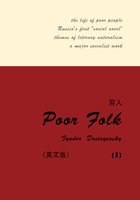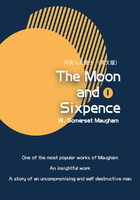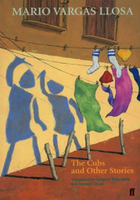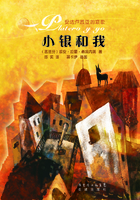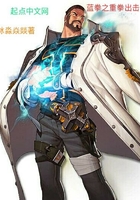NAKED LOPI: A Knitter's Journey to Iceland
I'D BEEN WARNED about the nudity. This was Iceland, after all, the land of Vikings and volcanic hot springs and Claudia Schiffer lookalikes. When you're five foot nine and weigh 115 pounds, with a perfect complexion and body unaffected by gravity, why wouldn't you want to strip naked and hop into a pool?
This little factoid had been so discreetly tucked into an otherwise exciting weeklong itinerary of yarn fondling and sheep wrangling that I let myself forget it would happen, like that root canal you avoid by chewing on the other side.
It was thus, bleary-eyed and optimistic, that I landed in Iceland one bright September morning just as the sun was peeking over the horizon. Beyond passport control, I met the outstretched arms of Ragnheieur Eiríksdóttir—better known to American knitters by her nickname, Ragga. For several years, this charismatic knitting instructor and designer, also a psychiatric nurse, popular columnist, radio and television commentator, and sex educator, had been bringing a steady stream of knitters to her island. At last, after more than a year of waiting, it was my turn.
Soon enough we were on the road, the intense morning sunrise illuminating the cracks in Ragga's windshield. A tiny handknitted sweater dangled from her rearview mirror, the Icelandic version of fuzzy dice or a pine-scented air freshener.
The airport is about thirty miles southwest of the capital city of Reykjavík. There is no town, really. Just an airport and open space and that feeling of having landed on a remote outpost. Nearby, I spotted a bleak clump of boxy buildings—imagine IKEA had designed 1970s prisons—that turned out to be an old NATO base. When it was decommissioned, the airstrip became the new airport.
Nearly half of the island is composed of lava fields, and the road into Reykjavík takes you smack dab through them. The smooth strip of Tarmac runs over what looks like a pan of brownies that someone tried to cut before they cooled. Here and there, a dusting of DayGlo-green moss provides contrast.
There was no, "aha!" moment when a cityscape unfolded, when I knew I'd arrived in Reykjavík. Just a gradual increase in traffic, more signs, more buildings. Roundabouts became traffic lights. To our left, a bacon processor adjacent to a mayonnaise manufacturer, or, as Ragga called it, the BLT factory. Hills of tidy, well-tended housing developments appeared on the right, a slightly cheerier, more verdant version of the Daly City you pass on your way into San Francisco.
Finally, I spotted a tall, jagged steeple. It looked like a cross between a Mormon temple and the ice caves in the original Superman movie. This Lutheran church is the largest in Iceland and is the country's sixth-tallest architectural structure, commissioned in 1937 and completed in 1986. When you're in Reykjavík, you quickly learn to orient yourself by it.
Ragga told me it was the Hallgrímskirkja.
"Could you repeat that?" I asked.
"Hallgrímskirkja," she said more slowly.
I tried to repeat the sounds that just came out of her mouth. She laughed, shook her head, and repeated, "Hall … grím … skir … kja …"
I have a good ear, and I'd rather assumed that I'd be able to memorize a few key words to ease my way into conversation. I was wrong. Icelandic is a gorgeous, rich, complex, utterly impenetrable mash-up of Old Norse sounds harking back to the island's first settlers in the ninth century. Vaguely familiar vowels and consonants are punctuated by guttural sounds, faint whistles, and trilly tongue flutters, sounds you didn't even know the human mouth was capable of making. Written, it looks like a cat walked across the keyboard.
In the end, I would spend eight days attempting "thank you" (takka tér, don't make me try to say it again) without ever getting a nod. The closest approval I got was with a phrase that means, roughly, "I am a dumb tourist."
There had been some apprehension leading up to the visit, mostly because Ragga had been MIA for weeks. I was left not quite sure of where I'd stay, or whether she'd be there to meet me, or whether we'd have a tour at all. At the last minute, she swooped into our inboxes with words of reassurance, but I still didn't know where I'd be staying. In a hotel, on a couch, sharing a bed with one of my students?
But the news was good. Ragga showed me up to an apartment on the top floor of her building, just steps from the Superman church. Every fifteen minutes on the dot, the bells chimed, usually to remind us we were going to be late for something. Ragga's internal clock has no hurry to it.
The interior hallway gave off that telltale musty fragrance of mixed lives. Strange spices, oils, perfumes, and another smell I finally recognized as feet. Each doorway had a small rack for shoes. Some were empty, others heaped. I imagined the boots piled high in winter. On each landing, lace-curtained windows offered a glimpse into the backyard world of rarely used decks, balconies, and yards.
It was early yet, not even 8:00 AM. After dropping off my luggage, we walked around the corner and sat on a bench outside Ragga's favorite café, which was still a few minutes shy of opening. At that hour, it was mostly groggy schoolchildren, groggy parents, and cats. Lots of cats, gazing at us from beneath parked cars, sunning themselves in windowsills, trotting down the sidewalk, defiantly twitching their tails at us. Cats are everywhere in Reykjavík. The other thing I learned while on that bench was that Ragga didn't have persistent flatulence, it was the abundant sulfur in the city's water. All of Reykjavík smells, gently, discreetly, undeniably of rotten eggs.
The leaves were just beginning to turn, and the air had that distinct back-to-school chill. By December, they'd have just four hours and seven minutes of daylight—versus the sixteen hours we would be enjoying. I found myself entertaining a thought I'd have again and again during my time in Iceland: What must this place be like in the winter? I pictured the streets shrouded in darkness and snow. It must be the perfect place to go after a bad break-up, to hunker down and wallow. Then summer comes, and by July they face the opposite problem: a sun that never truly sets. It just goes into dusk mode for a few hours before popping back up over the horizon.
By now, the café was open, so we wandered inside. The menu was an enigma. I did not see anything that could, if you removed the dots and squiggles, be guessed to be "cappuccino." Prices made no sense, either, what with 1 króna equaling approximately $0.00886 US dollars. I picked one at random and asked Ragga if it was any good. "Sure! Yeah!" she said. The price was 500 krónur. My brother had warned me how expensive Iceland was. I'd never paid 500 anything for coffee before, but my jetlag-addled brain was incapable of doing the math.
We sat at a table made out of an old treadle sewing machine. Ragga pulled over a tray of nail polish the café made available to customers. I'd seen it on other tourists' Instagram feeds. She sloshed some mustard yellow on her short nails while we waited for our order. Music was playing, and every once in a while, someone would saunter over to a turntable to switch the record. We went through Talking Heads, Debbie Harry, then the Beatles. I watched long legs with colorful tights and impossibly high-heeled ankle boots—the official footwear for most women in the city—bob up and down to the music at other tables.
These people looked nothing like the ones I'm used to seeing in my neighborhood, even at my favorite indie coffeehouse. These were gorgeous, elegant, finely crafted human specimens. Soft-spoken and visually dramatic, the women looked like Nobel prize-winning Swedish supermodels, the men like Viking reenactors, but in skinny jeans and Converse high-tops. No matter who it was, no matter how shaggy his or her hair or geometric his or her glasses, everyone was wearing wool. Not the fine Italian stuff, either, but thick Icelandic wool knit into bulky sweaters.
The sweater is called a lopapeysa, and it's a national treasure. Everyone has at least one, from the baggage handlers to the garbage collectors, mothers and hipsters and old folk alike. I didn't see a dog in such a sweater, but that doesn't mean they weren't there.
While it'd be much more romantic to think that the lopapeysa has been around since the Viking days, this iconic style is actually a twentieth-century invention. Nobody knows exactly how it started, but this thick sweater with colorful patterning around the yoke (and sometimes waist and sleeve) gained popularity in the 1950s, about the same time my grandparents first set foot on the island. My grandma went berserk with the stuff, jamming her suitcase with finished sweaters and pounds of Icelandic wool yarn, with which she knit her grandchildren wonderfully rugged, scratchy lopapeysur (the plural for lopapeysa). She wore one of these cardigans every day, rain or shine, no matter the season. It was such a permanent part of her wardrobe that the cuffs had to be darned repeatedly to compensate for her compulsive fidgeting. I almost brought one with me to Iceland, but I couldn't quite bear to risk losing it. The lopapeysa took on a renewed symbol of national pride following Iceland's economic collapse in 2008. By the time I got there in 2012, they were everywhere.
Nails dry and fully caffeinated, Ragga and I embarked on a walking tour of town. Along the narrow roads of Laugavegur and Bankastr?ti, we zigzagged back and forth from window to window. Ragga seemed to know everyone we passed. "He's my cousin," she'd say, waving to a man across the street. "We go way back," she'd say about someone else. "She's a famous fashion designer," she'd tell me as she pointed to a woman we just met entering a building, or "That's my ex-husband's sister." I joked that she was like the mayor of Reykjavík. "No, he's way cooler," she said. "He was in our last Gay Pride parade, in full drag."
The cars seemed to have no agenda. They slowed, like sheep, to let us cross. I could only imagine how baffled an Icelandic pedestrian would be upon encountering drivers, honking, selfish, impatient, in one of the United States' capital cities.
I asked where we were in relation to home, and Ragga pointed to a street sign nearby, apparently our street. It said "Skólav?reustígur." I didn't even bother to ask her to repeat it, nor did I bother to try and write it down. I memorized the first part, "Skóla," and then replaced the rest with what would become my standard banter, a bad imitation of the Swedish chef from the Muppets.
You don't realize how highly keyed your barometer of danger is until you go to a place like Iceland. I only saw one police officer the whole time I was there. Graffiti did cover walls and fences, but it was always a bright and colorful artistic adornment. The few pierced youths I passed, walking four across on the sidewalk, still stepped aside to let me get by.
Ragga left me at a market on our street to stock my kitchen with provisions. You can tell so much about a place by its grocery stores. In Iceland, the biggest difference may be in the bottled water aisle—by which I mean you won't find one. Buying bottled water in Iceland would be like traveling to Poland Springs, Maine, and refusing to drink from the tap.
Instead, I picked up a tetra pak of Mj?lk for my tea, daydreamed in the baking aisle, and gaped at the selection of Skyr. This decadent Icelandic concoction claims to be strained yogurt but tastes for all the world like unadulterated crème fra?che. Having already gotten hooked on it in the States, I snagged an obscene amount, just because I could.
I'd come to Iceland for an eight-day trip of a lifetime billed as the Clara Parkes Iceland Experience. What it really meant was that I'd be teaching two three-hour workshops on yarn and wool, Ragga would teach one three-hour workshop on the lopapeysa, and then the group would pack up our bags, head into the country, and be tourists together, collectively fondling yarn and gawking at sheep. We were sixteen people total, including Ragga and her cherubic assistant, Fanney. I knew two people on the tour from the Knitter's Review Retreat. Everyone else was new to me.
We hailed mostly from the United States, with a demographic leaning toward an over-fifty crowd. We were women mostly, and many of us were grappling with empty nests, recent widowhood, spinsterhood, and Peggy Lee's eternal question, "Is that all there is?" Iceland was a major line item on each of our bucket lists.
Everyone else in the group bunked together at a hostel down the hill from my apartment. Sets of strangers had been tasked with duking it out: Who got the real bed, who would sleep on the couch, and who could pretend to be least bothered by the choice? Nanci, a New Jersey expat living in Toronto, took one look at the accommodations and demanded that Ragga find her a proper hotel.
Our workshops were to be held a short walk away at the KEX, a waterfront hangout that just happened to be one of the top hostels of the world. The carefully rumpled lobby was a Grand Central Station of hipster—just the previous week Patti Smith and Russell Crowe had given an impromptu concert in the library. The day after I arrived, Ragga took me there for lunch before we met the group for the first time. She glanced over my shoulder, smiled, and whispered that members of the Icelandic band Sigur Rós were there giving an interview to the foreign press.
In the company of the right person, someone as knowledgeable and connected as Ragga for example, it's possible to feel like you've slipped right into the fabric of the city. They love tourists in Iceland, especially since they have played such an important role in the rebuilding of the economy. Just don't try to move there permanently. Iceland has erected very high, costly, and time-consuming barriers to permanent immigration including, but not limited to, a complete FBI criminal background check. As traditionally difficult as immigration has been, cultural assimilation is even harder. My friend Anna was born in a tiny Iceland town, moved to the United States as a child, and was completely rejected when she tried to return as a teenager. As devastating as that experience was for her, she is still fiercely proud of her Icelandic heritage.
Keeping intruders out of paradise is nothing new. My friend Bettina told me the same thing about South Carolina. "They love you down there, they really do," she said, "as long as you don't move there." Come to think of it, I've heard that about parts of Maine, too.
Our group quickly warmed to one another in that way strangers do when thrown together. Characters emerged. Like Kelly, a short, freckled redhead with razor-sharp intellect and an infectious laugh, who became our unofficial legal counsel. She'd retired to Arizona after a career in Los Angeles prosecuting murderers and drug lords. We took turns testing theories on her, trying to concoct the perfect crime for which you'd never get caught.
Playing Hardy to Kelly's Laurel was the tall, slender Helen from Rhode Island, long-ago divorced and recently retired and always, always in a good mood. She'd slink away and photograph things none of us had found, triumphantly returning to show us her latest windowsill vignettes, cats, croissants from the local French bakery, and details of passing lopapeysur. Kelly and Helen were plunked in a threesome with Lou, an avid handspinner from Evansville, Illinois, who Skyped with her cat every night.
Every group has its puppy, or pair of puppies, and ours were Kat and Frog, a young couple from Australia. This was their first major journey off their island, and their bright-eyed enthusiasm was contagious. Rarely have I ever been around two people who were more game for anything.
Their Australian accents were charmingly thick and chewy. I loved the way they said "Pith" instead of "Perth," "bick" instead of "back." Thwarted by Icelandic, I set about mimicking their accents instead.
Having already established her reputation as the Princess-and-the-Pea of our group, Nanci-from-Toronto-but-originally-from-New-Jersey surprised us by actually being quite game for anything, too.
On our last night in Reykjavík before leaving for the countryside, we were gathered at the KEX for dinner. Ragga had just finished giving Nanci directions to the famous hot dog stand where Bill Clinton ate (just before undergoing open-heart surgery) and where Anthony Bourdain filmed a late-night segment of No Reservations.
"Be sure to get the 'everything' hot dog," Ragga advised.
Nanci's eyes narrowed, "What's on it?"
"It has remoulade, it has mustard …"
Nanci interrupted, "No, no, no mustard."
"It has ketchup …"
"No. Listen," she squared off. "I like my hot dogs split down the middle, with grill marks down the back …"
"Well, you will not get that hot dog in Iceland," Ragga smiled. "Yours will have crispy fried onions …"
Nanci perked up. "Like onion rings?"
"No. Like an onion that has been fried."
"Do they have onion rings?"
You could see Nanci struggling. At last, she shrugged. "Oh well, I'll try it anyway. Now exactly where is it again?"
Later that night, as I was finishing up my last class, there was a banging at the window. The chef had gone out for a smoke, glanced upward, and spotted the Northern Lights. This dazzling phenomenon is best viewed in the magnetic polar regions where it gets really, really dark at night—making Iceland prime viewing territory.
"Everyone, outside!" Ragga yelled. "Class dismissed!" We donned our coats, grabbed our cameras, and trotted out the door. Once our eyes had adjusted to the darkness, we saw magical wisps of Ghostbusters green in the sky.
I stayed up far too late that night, nose to my bedroom window, gazing at the green. It kept shifting shape. First it was fog, then distinct rays, then a giant bubble like a cartoon caption. I tried to Skype the sky back home to my partner, Clare, but my camera just couldn't capture it. Not even our cat was interested.
The next morning, it was time to leave the city, head north, and find some sheep. We trundled our suitcases to the street and boarded a narrow bus driven by Reynir, a stern and sullen young man with a baby face and the beginnings of a belly. He wore a dark jacket with the tour-bus company's insignia embroidered on it.
We were barely fifteen minutes out of Reykjavík when we made our first stop. Our destination was the town of Mosfellsb?r and ístex, which is to yarn what Willie Wonka's factory is to chocolate. The typical image of a spinning mill always seems to involve ancient brick buildings perched next to a rushing river, but the ístex mill—the largest mill in Iceland, and the one where nearly every skein of Icelandic yarn comes from—occupies a thoroughly modern box of a building.
The original mill, álafoss, went bankrupt in 1991 after ninety-five years of operation. Three of the original employees bought the company (and now share it with a fourth owner) and changed its name to ístex. They retain 50-percent ownership, and the other half of the company is owned by the Icelandic Sheep Farmers Association, which currently numbers 1,800 members and represents nearly all sheep farmers on the island.
We walked down tidy beech-colored hallways of an IKEA-styled office building, not quite sure how it related to the manufacturing of yarn. And then through a set of heavy doors that led into the site we wanted to see: the mill.
Here were the ancient machines, still operating with loud, mesmerizing precision. I had the feeling of watching a vintage B-52 bomber that's been carefully maintained in perfect working order, Singer Featherweights on a massive scale. Some of what we smelled wasn't wool at all but the grease necessary to keep all the moving parts lubricated.
We gazed, dumbfounded, at the bales of scoured Icelandic wool stacked from floor to ceiling. This represented the bulk of wool produced in Iceland. The average farm has between 300 and 500 sheep. Multiply that times the 1,800 farms that sell their wool to ístex every year, and you begin to get a sense of the scope of this operation. Of course, wool is just part of the sheep equation, the bigger and more profitable half being those Icelandic lamb chops being sold at your local Whole Foods.
But here, we were too busy gazing at the mountain of Icelandic wool bales. A nearby bale had been cut open and a tuft of wool was sticking out. When our guide turned away, Ragga grabbed the clump, yanked it from the bale, and shoved it in my raincoat pocket. In one moment, I'd gone from stupid tourist to felon. "You'll want this for later," she said.
Our circuit through the mill followed the natural order of yarn production, as everything had been laid out so that the fibers could be moved sequentially (and efficiently) from one machine and process to the next. We watched giant steel hooks lift dyed fleeces from their tanks, still dripping. We gazed into the room in which different colors of fiber are blown and tossed about. Many of the Lopi colors are heathers, which means that what we see as blue might actually be an artful blend of light and dark blue, purple, perhaps a dusting of red. That mixing room is where the color magic begins. Next, the mixed fibers are transported to massive carding machines that tease the fibers apart into a smooth sheet of blended beauty that is, at last, peeled off into narrow strips, rubbed together, wound onto long spools. These spools are then lifted off the card and moved to spinning frames, where they are stretched and twisted into true yarn. The barely spun Pl?tulopi doesn't even go to the spinning frame, the fibers get pulled off the spool and sold as-is.
The pièce de résistance was a new investment, an amazing robotic machine that winds the yarn into tidy balls and plops them into little cradles on a conveyor belt, where padded mechanical "hands" reach down and give them a squeeze. Another set of mechanical hands retrieves each ball and wraps a thick paper label snugly around its belly. At the end, the skeins pass by conveyor belt to a woman who slips them neatly into clear plastic bags and tucks them in boxes that are shipped to yarn stores around the world. With almost no exception, if you buy yarn from Iceland, whether it's labeled Pl?tulopi, álafosslopi, Bulkylopi, Léttlopi, or Einband, it comes from here.
Not everything had been mechanized at the mill. Near the end of our tour, we reached a woman standing at high table not too far from the robotic wonder. Her task was to twist finished hanks by hand, slide paper labels over them, and then stack them in a tidy pile. There she stood, government-mandated ear protection firmly in place, patiently doing one of the world's most tedious jobs while we all smiled and took videos of her graceful, well-practiced motions, giving her the universal thumbs-up sign.
Primed and ready to spend, our next stop was the álafoss factory store, located along the Varmá River in the older part of Mosfellsb?r. Here, we finally had the picturesque old mill building beside the gurgling stream, with creaky wood floors and haunting black-and-white photos of how things used to be. A mill has stood here since 1896. Today, it is strictly a place for tourists to come and part with their money. Our bus parked in a lot next to a nondescript building that happened to house the studio for the same band that I'd spotted at the KEX earlier in the week—Sigur Rós.
Once across the street and inside the factory store, everyone went nuts. We'd been given a discount on already inexpensive yarns, and people stumbled back to the bus with giant bags that had to be stuffed in the luggage bays. I, however, was smug. I've seen enough yarn in my lifetime, I thought. I am above buying more just because I'm at a factory outlet and have been given a discount. Just to prove my point, I made it out with a single set of rosewood circular needles.
From here, we quieted down for our two-hour ride north to the Sn?fellsnes Peninsula. Our road took us right along the coast before dipping down, down, down, 500 feet beneath the Hvalfj?reur fjord. The two-lane tunnel ran for more than three miles. After a few light jokes about claustrophobia, Reynir mumbled something and Ragga pulled out her microphone. "Our driver tells me this tunnel was closed briefly last year after a truck exploded." For the first time, he smiled.
Ears popping, we ascended into a wilder, more remote landscape. Jagged mountain peaks shot up on our right, their soft, green sides sloping elegantly to a frothy coastline on our left, the landscape of a Dior gown. We'd passed the outer limits of the North Atlantic and were now gazing at the Denmark Strait.
Suddenly, we turned off the road and into the parking lot of the Icelandic equivalent of a suburban Safeway. "Okay, folks!" Ragga announced over the PA system, "This is it! Our last grocery store for quite a while. If you'd like any snacks for the next few days, now's your time to get them."
We all dutifully marched in, heads bowed against a brutal wind and the beginnings of rain. You'd think we were remote explorers preparing for a year in the outback the way we heaped our carts high with cookies and crackers and chips. Past the dried fruit I sauntered, eyeing the canned goods, the school supplies, the … I stopped.
There, inside a regular old grocery store, was a complete yarn section. Not just a shelf or two, but shelves and racks and bins and an entire wall of every conceivable color and weight of Icelandic yarn, from the barely spun Pl?tulopi to the chunky álafosslopi, from Bulkylopi to the lighter Léttlopi and lace-weight Einband.
This was identical to what I'd just left at the factory store. But something about the supermarket setting made me snap. The heathered colors were suddenly exquisite and irresistible. Right then, I decided I would knit a small blanket during this trip, something I could put on my lap while reminiscing about my time in Iceland. The ever-game Kat and Frog kept me company, augmenting their stashes with multiple shades of green for a project they would complete during their trip. (Only they actually did.)
"Did you see the yarn section?" we asked one another back on the bus, stowing our bags of cookies and drinks. Ragga smiled patiently.
"They had yarn!" we kept repeating in disbelief.
"In a grocery store!"
"I KNOW!"
The fact that the prices made no sense made the whole thing even more exciting. Unless you had a calculator or a gift for numbers, it was almost impossible to know exactly what you'd just spent. Everything seemed like a bargain and a splurge, we never quite knew.
We bounced our way up the peninsula, lulled to sleep by the thwack, thwack, thwack of the windshield wipers. Reynir's seat had a life of its own. Every time we hit a bump—which we did with increasing frequency—his seat would rise high, then let out a slow hiss as it settled back down again.
Suddenly, a cry came from the back of the bus. "Sheeeeeeep!"
All eyes turned to see our very first, true, capital-I Icelandic sheep. Out there! In the wild! We pulled out our cameras. We oohed and aahed. This was why we'd come.
The Icelandic sheep is a rarity in the modern world. Its genetics can be traced to the original sheep brought to the island by early Viking settlers in the ninth century. Back then, we relied on sheep for everything—milk, meat, wool, and skin alike. They grew varied coats with fibers ranging from the fineness of silk to long, rugged strands best used for ropes. Everything came from these sheep. Even the sails on Viking ships were made from this wool, spun by hand on a spindle.
While the rest of the world set about "improving" their sheep breeds from the late 1700s onward, to grow bigger bodies and softer, brighter wool, Iceland's sheep remained untouched. Smaller than the average bulked-up commercial sheep, their coats still grow two distinct kinds of fiber. Thick, long rugged fibers are called tog, and they act as I-beams in the yarn, making it strong and durable. The short, exquisitely fine fibers are called thel, and they act as blown-in insulation, making those strong and durable garments also extraordinarily warm. Icelandic sheep still produce coats in a gorgeous array of natural colors far beyond just brilliant white. Their overall lack of genetic meddling makes these sheep an eerily accurate time capsule to the ninth century, which, in turn, makes Iceland such a compelling tourist destination today.
A few minutes later, another cry, more clicking. Then another cry, and another, until the cry became a joke because the sheep, they were everywhere.
The landscape had become vast and rugged, with nothing but raised roads and irrigation ditches to suggest where one property might end and another begin. Regardless of where we looked or whose property it may have been, we found sheep. Everywhere. These furry skin tags on the landscape, plump little marshmallows dropped from on high, upon closer inspection they all revealed themselves to be sheep. There seemed to be no rhyme or reason to where they were roaming or how they managed to get there.
Like loitering teenagers, the sheep stood alone or in small clusters. The more remote the terrain, the warier they were of our approach. They'd wait until we were within grabbing distance to turn and run, their wooly behinds going rumpety-bumpety-bump away from us, until they felt it safe to stop, turn around, and stare.
Sheep may be among the most common animals on the island today, but when the early Vikings arrived, they also brought goats. Eventually they realized that they needed a fattier diet than the goats provided, so sheep gained favor. But the goats never quite left. Today, their biggest predator is the angry farmer who doesn't appreciate having his hay bales torn open and devoured.
One woman is doing her best to preserve and grow Iceland's native goat population. Her name is Jóhanna, and we reached her Háafell farm just before lunch. Her herd has the oldest native goat genes in all of Nordic Europe, dating back to those same early Viking settlers. Not only do these goats provide meat and milk, but they also grow—as does their cashmere cousin the Capra hircus laniger—a delicate undercoat of extraordinarily warm, fine fibers. The herd isn't nearly large enough yet to provide fibers for yarn production, but she hopes one day it will.
After a brief walk in the pasture, where Helen disappeared yet again to snap the best photographs, we assembled in a low cinderblock building for lunch. Jóhanna had set out a pretty table of cold cuts, thin slices of hearty black bread, slabs of butter, small chunks of goat's milk cheese, stacks of cookies, yogurt, and a pitcher of goat's milk, fresh from the udder. A tiny vase held roses from her garden.
I watched our group politely bypass the cold cuts and make a beeline for the butter. We were like termites with the butter, devouring every ounce of it wherever we went. I don't know if it was empirically better or if it was the allure of being away from home and throwing all dietary rules out the window, but the butter in Iceland tasted better, we'd all agreed on this.
We also doubled up on the chocolate-covered digestive biscuits. Jane from Seattle poured me a tall glass of lukewarm goat's milk, which I accepted with a smile that concealed deep regret. That morning's breakfast of dried fish dredged in butter, and the subsequent bouncy road, had left me feeling a little off.
Shooing flies off our plates, we listened to Ragga translate for Jóhanna. She didn't have a licensed commercial kitchen, so she couldn't sell any of the milk or cheese we were eating. Instead, she used the goat's milk for her own homemade skincare products. Which meant that after lunch, we dutifully lined up to buy jars of creams and lotions and salves that promised to restore our youthful complexions.
Back in the bus for another hour of bouncing, we reached a tiny home-based shop run by some old friends of Ragga's. Ducking as I passed through the small entryway, I sniffed a musty smell and glanced to my right to see something white in a bowl of brilliant red. A freshly severed sheep's head. They carved buttons from the horns, and I didn't ask what would happen to the rest.
We were shown their handcrafted wares, things like beautiful felted wool slippers and the carved sheephorn buttons. Fingering the wad of fiber in my pocket, I glanced at Ragga. She raised an eyebrow and pointed under a low shelf at the end of the room. My pulse quickened.
This farm participated in a small fiber cooperative that's little known outside of Iceland. Instead of selling their wool to ístex, they pool it together and ship it to the same scouring plant that ístex uses, but with different scouring instructions. They prefer to keep the water at a lower temperature, helping preserve more of the natural oils in the wool. I suspect ístex has its fibers scoured at the temperature it does because they understand, probably rightly, that mainstream consumers aren't as enamored of the smell of sheep as knitters are. But it was impossible to deny that these lightly scoured fibers had a much more tender, succulent feel while retaining that telltale sheep fragrance. The fibers are then spun by ístex into Pl?tulopi-styled yarn, which each member of the cooperative is allowed to sell.
Pl?tulopi is as close to knitting with a sheep as you can get. Its barely twisted, wisplike strands of fiber are usually held together in pairs to knit a garment. On its own, the yarn may be fragile, but as soon as it's knit up, you have a fabric that wears like steel. The other Icelandic yarns are presented in more conventional skeins or hanks, but Pl?tulopi comes right off the carding machine in disks or "cakes."
Beneath the counter that day, they had just a few cakes of brilliant white. The rest were a heathered gray, chocolate brown, and a relatively rare jet-black. In another room, they had large mesh bags of scoured, unspun roving for sale. Happier than a pig in swill, I returned to the bus and stuffed my own bags in the luggage hold. To be fair, I had told the others why this yarn was so special, and I didn't grab it all.
The sun was about to set as we finally pulled into our hostel for the night. The squat cinderblock structure stood within roar's distance of the ocean. We looked up just in time to catch a rainbow spanning the entire sky, uninterrupted, from mountains to sea. A second rainbow appeared inside the bigger one.
Tucked into my narrow twin bed, I slept well that night. All around me, the comforting sounds of a hostel: the opening and closing of doors, hushed voices, footsteps on linoleum. Our muddy boots were neatly lined up on mats outside each door. Rain battered the roof all night. The wind huffed and it puffed, but it did not succeed in blowing us down.
Over breakfast the next morning, Helen from Rhode Island got it in her head that she wanted to ride one of Iceland's famous, pony-sized horses while she was here. She'd looked it all up on her iPad. She had the name of the place, the times, the fees, all of it. She just needed Ragga's assistant, Fanney, to make the call.
"Would anyone else like to go horseback riding?" came the question as Fanney pulled out her phone. What the hell, I raised my hand.
And so a smaller group of us piled into the bus and headed up the road a few miles to a horse farm. Beautiful little Icelandic horses were saddled and brought to us in a barn that was cleaner than most people's houses. One by one, we were led to our horse and helped onto it.
"Mine is moving!" cried Nanci from her horse. "Are they supposed to move?"
Two steps out of the barn, Nanci declared she was done. "I'm not ready for this!" And it was a good thing she did get off, because a few minutes later, passing through jaw-droppingly stunning scenery, someone made the mistake of suggesting that we go into a trot. Now, normal horses have just three gaits: walk, trot, and gallop. But the Icelandic horse breed has two additional gaits, t?lt and skeie. While the t?lt is allegedly very smooth and comfortable, it's also known for its sudden acceleration. And we weren't going into a mere trot, no. We were going into a t?lt.
"Ready?" came the call from up front. My horse moved and I flew high into the air, feet out of the stirrups, butt out of the saddle. Only by some miracle did the saddle and stirrups return to greet me on the way down. Another leap, another miraculous save, over and over again, until—thank God—we slowed to a walk. Nobody else seemed to be in any state of distress. They were all smiling, relaxed, reliving childhood dreams of riding their own ponies off into the sunset.
Of course, I'd been given the horse with an eating disorder. While the other horses sauntered along just fine, mine wanted to stop at every bush, every bit of remotely edible brush. At first I did as told and yanked him back up, spurring him forward. Then I decided to strike a deal with him. "Okay, fella, I'll let you eat this stuff if you promise not to kill me before this ride is over. Do we have a deal?"
Apparently he listened, because an hour and three jarring and perilous t?lts later, he safely deposited me back at the stable. But the day's adventure was far from over. After a quick stop to retrieve the rest of the group, including one person who was refusing to come out of her room (Ragga's training as a psych nurse came in handy), we hit the road again, this time for a remote field up the road. There, locals had assembled around a large, splintery wooden pen. They stood and chatted while, inside, hundreds of nervous sheep wondered what was going to happen next.
In Iceland, the sheep are allowed to wander as far and high as their hooves will take them during the summer months. All too soon, September rolls around and the farmers must retrieve their sheep. They're rounded up, herded down the slopes, and ushered into these penned areas no bigger than a city house lot. Each sheep is identified by a number on its ear tag and sent back to its home for winter.
This annual tradition of rounding up, sorting, and sending sheep home is called réttir, and it's why we'd come. There were no introductions, we just walked up to the pen, exchanged shy smiles, and stood.
Our task was to go inside and start "catching" sheep, which I assure you sounds far easier than it actually is. We were to grab their horns, raise a leg over their (sometimes dangerously high) backs, and straddle them tight while reading the number on their ear tags, finding someone who knew where that sheep went, and then escorting the reluctant sheep over to that pen.
Réttir is for neighbors, family, and friends. Our tour bus was an anomaly, a gently accepted intrusion into a local ritual. People perched on the rails and talked in clusters. Toddlers were lifted into the pen and walked around by their parents. Children caught the smaller ones. More experienced farmers did the task with panache, often grabbing a single horn and straddling the sheep so swiftly that it didn't realize what had happened. We were perhaps slightly less graceful, but we caught on quickly and did our part.
I hadn't been looking forward to this portion of the trip. I did not want to participate in traumatizing the animals. (Yes, I eat meat. I realize the hypocrisy.) But upon closer examination, there didn't appear to be any real damage. This was simply sorting. The sheep were not violent or mean, nor were the people. The animals protested, we asserted, and eventually everyone got squared away. I'll confess it felt unexpectedly pleasant to interact with the animals in such a physical way, to touch "living wool" while gazing into the eyes of the creature growing it.
I went for the shorter ones, lest a taller sheep take me for a ride. I also picked the ones with horns, for the same reason you'd choose a bicycle with handlebars instead of one without. I learned quickly that if you didn't hold the horns firmly with both hands, the sheep would wiggle their heads side to side, digging their horns into your thighs.
The overnight rain had made the ground muddy and slippery, and occasionally I had to stop and catch my breath. A few of us had already taken tumbles. "I am really, really sorry about this," I said to a particularly frisky young guy while I rubbed his cheek. "I promise, all I'm trying to do is get you over there… ." (I pointed, and I swear he looked.) "Once I do, it'll be over." They had very intelligent eyes. I knew they were sizing us up, too, figuring out which of us they could outrun.
The whole scene was like an Iceland tourist commercial. As if on cue, a beautiful young girl and her handsome father appeared on horseback and began giving friends rides. A cluster of equally beautiful people stood against one fence, colorful patterned lopapeysa after lopapeysa on adults and children alike. These walking advertisements for Iceland were, in fact, local sheep farmers and their families. One particularly tall, slender blonde woman drew our attention. She was breathtakingly beautiful, a dead ringer for Heidi Klum. Helen from Rhode Island sauntered over to snap a picture and reported back with a satisfied whisper, "She's wearing makeup."
We were too shy to approach people directly or ask to see their sweaters up close, so we teamed up to do walk-by shots of different sweaters. "You do the front of the yoke," we agreed, "and I'll go from behind to get the back detail." And so, across multiple cameras, we managed to capture the most memorable designs on display that afternoon.
As the day wound down, it was time to return the sheep to their farms. A few were loaded onto the backs of trucks, but most were sent home in a much simpler way: The farmer and his family lined up outside the gate, creating a long sort of human tunnel to direct the stampede. They opened the door, and out the sheep went, running rumpety-bumpety-bump, guided by their human sheepdogs.
We followed the last group on foot to a neighboring farm where we'd been invited for a réttir party. It turned out to be the horseback-riding family's farm. The wife was none other than our Heidi Klum lookalike. We traipsed up a muddy driveway, past the farmhouse, and toward the barn.
An overwhelming smell of urine hit us the moment we stepped inside. Not just a gentle unpleasantness but a putrid, full-on stench of stagnant urine. This was, after all, a barn.
The inside had been swept and tidied for us, boards placed between the tops of empty pens to form makeshift tables. A buffet had been set out: cheeses, lamb paté, a few kinds of salads, some cheerfully frosted cakes, all clearly homemade. We were starving.
At the end of the buffet, a woman handed us each a small paper cup into which she ladled some of the famous Icelandic meat soup. The bright yellow broth held a few diced carrots and a small wad of lamb on the bottom. I sniffed it, but all I could smell was the barn.
Timidness overtook us. There wasn't much mingling of the groups. We mostly stood in our various social clumps, sipping our soups, waving gnats off our slices of cake. Behind me, a gray-haired woman swayed back and forth on a folding plastic chair while playing haunting tunes on the accordion.
Outside, the light was just beginning to dim. The smell, though still noxious, wasn't quite as bad anymore. I'd grown enchanted with the ancient ritual of it all, the remote otherworldliness of where I was and what I was experiencing. At which moment pretend-Heidi's teenage son skulked past me, iPhone in hand, metal music screeching from his earbuds.
On the way back to our hostel, Reynir turned off the main road and up the hill back toward our morning's horse farm. Just beyond it was a quiet mineral pool adjacent to the town elementary school. Ragga had arranged for it to stay open, and we had the place all to ourselves.
One by one, we filed through a side door and into a small room. The door closed behind me and my eyes adjusted to the dim light. I glanced around and realized what had just happened. I was trapped. The moment I had feared and dreaded was now upon us.
The only way out was to get naked.
When I'd first heard about this part of the agenda, I yelled an emphatic, "Oh hell no!" and threatened to pull out of the trip entirely. My friend Cirilia, a wisp of an Audrey Hepburn, had tried to reassure me that while it was indeed awkward, it wasn't that bad. Of course it wouldn't be for her. But I come from a long line of profoundly private people. I don't even like undressing for my doctor.
Iceland's pools are fed from the abundant, mineral-rich, geothermal springs. To keep the water clean without contaminating it with too much chlorine, they have devised a system whereby everybody must scrub-a-dub-dub all orifices before getting into the pools. Bigger facilities have a paid monitor who stands there, all day long, watching the proceedings and issuing a warning if you haven't sudsed up sufficiently. (Just think about that the next time you want to complain about your own job.)
This being a tiny pool, there was no such monitor, nor did we even have a chart (as the bigger pools in Reykjavík apparently did) illustrating the specific areas of concern that we were to scrub. But we were still to strip naked, line up at the two showerheads on the other end of the room, squeeze the soap dispenser once or twice, and scrub. Only then would we be allowed to put our bathing suits back on and head to the pool.
There were no stalls, curtains, or cubbies in this room. It was a cinderblock rectangle with nothing but hooks on the walls and sagging wooden benches along three sides. There was nowhere to hide.
Everyone else had taken vaguely protected spots along the wall. With a heavy sigh of capitulation, I put my things down right in the middle of the room and did it. Starting with my shoes, then socks, upward I went, until I had removed every piece of clothing from my body. I even took off my glasses, hoping that my own blindness would magically extend to everyone else. I stripped buck naked in front of women—friends, students, fans, admirers—who had paid for the Clara Parkes Iceland Experience. Boy were they getting it.
We all stepped carefully lest we bump into someone, and wouldn't that be awkward. It was hard to know where to look. I glanced to one side just in time to get a full-on display of boobage. I overcorrected by looking to my left, where, oh dear, a woman was bending over. I yanked my head back to center and just looked straight ahead, trying not to… . Wait, was that a bruise or a tattoo I spotted? If only I hadn't taken off my glasses.
Emboldened by my act (or eager to get it over with), I led the pack to the shower and pressed the red button. A fine mist of lukewarm water sprayed from high above. I squirted and sudsed, flapped my arms and legs to make it perfectly clear what I'd scrubbed, and then I stepped aside for the next person. Who, with the rest of the line, was standing right there pretending she hadn't watched what I'd just done.
The only thing less graceful than stripping in front of a room full of women is putting on a bathing suit when you're sopping wet. I fumbled and stumbled and nearly fell facefirst into some particularly bountiful cleavage before finally managing to yank everything up and tie the straps. This was my karmic revenge for what I'd done to those sheep today. I'd been grabbed, tagged, and sorted. Having lost my final shred of pride, I headed for the pool.
Which was, as it turned out, well worth the humiliation. We steeped in steaming water, heated from the depths of the earth itself, while moody, snow-capped mountains gazed down at us. In the distance, the setting sun had turned the Sn?fellsj?kull glacier bright pink.
Someone had left an inflatable beach ball by the pool. Reynir (who was still grumpy from being locked out of the men's dressing room by our one resident couple) picked it up and spiked it into Fanney's face. She gasped, grabbed the ball, and retaliated. Soon we had a full-scale volley. The pool's bottom was coated in a slippery mineral muck that made moving a challenge. We mostly took turns making dramatic leaps that went exactly nowhere.
Later that evening over candlelight and glasses of wine, we compared notes on the bruises forming on our thighs—gifts from the horns of all the sheep we'd wrangled. Ragga pulled out a cardigan and showed us how she cuts a steek. Lou Skyped with her cat, others shuffled sweater pictures to one another from their iPads. In the next room, a TV was playing Grease, compete with Icelandic subtitles. We all sang along to "We Go Together," the knitters in one room, Icelanders in the other.
The next morning, we loaded up and headed north across moonlike terrain. We dodged glistening potholes and navigated bridges that got narrower and narrower until, finally, we reached one that belonged more on a miniature golf course than a formal roadway. Reynir stopped at the peak and yelled, "Everybody out for a swim!" Amidst our cries, he explained, Ragga translating, that the bridge was actually too narrow. He couldn't open the doors for us to jump out, even if he tried.
We stopped at another grocery store and partook in more yarn; donned white cotton gloves to touch centuries-old handknits at the textile museum in Bl?nduós; continued to consume our weight in butter; and added swans and a lone falcon to our list of wildlife sightings. Over time, the persistent dramatic beauty became almost exhausting. Darkness gave welcome relief from the constant stimulation.
We returned to Reykjavík after sunset, our headlights joining a few others in what Ragga identified as an Icelandic traffic jam. And a day later, we assembled at a long table for our farewell dinner. We'd drunk our wine, made sentimental toasts, exchanged email addresses, and crunched the caramelized tops of our crème br?lées, but Ragga had one final surprise in store for us. Outside the restaurant, a row of taxis waited to whisk us to the suburbs, to a church where Ragga has been leading a knitting group for several years. Tonight was their big autumn gathering, we were their guests, and I was their guest of honor. They'd even announced the event on the radio.
The room was barely half full when we arrived. The more outgoing members of our group immediately trotted off, inserting themselves into conversations in that endearingly loud, unselfconscious way of Americans abroad. I, on the other hand, excused myself and went to hide in the bathroom. I always get jitters before public appearances. I worry that nobody will come, and I worry that the few who do come will be colossally disappointed.
When I did emerge, the room was full of women. Gone were the supermodels in high-heeled boots, the Viking reenactors in Converse sneakers. These people were quieter and more real. It looked like my old knitting group back home. Needles were already in motion, the room a murmur.
Following Ragga's command of "Go mingle!" I took a deep breath and picked a nearby table. I walked up, put my hand on one of the empty chairs, and asked, "May I sit here?"
They glanced at one another, confused. Finally, their ringleader, a prison matron in a black leather blazer, looked at me and shook her head. I rebounded to the next table where they, too, consulted one another and shook their collective heads.
I spotted Helen from Rhode Island, perched at another table. She was knitting away while the others ignored her. She looked up at me and smiled a defiant smile that said, "I'm going to sit here all night if that's what it takes."
It was all going so terribly wrong. This evening was to be our cross-cultural triumph. Armed with nothing but the universal language of knitting, we would break down our cultural barriers, hold hands and sing "Kumbaya." Instead, it seemed like we'd blundered into something that wasn't ours. I returned to Ragga's table to lick my wounds.
Door prizes were another revelation. In the United States, the giving out of door prizes at any knitting event is like a game show. Everyone hollers and applauds for the prizes and winners. But here, as Ragga pulled names and handed out prizes (mostly copies of her knitting DVD), I soon realized we were the only ones making any noise. Everyone else seemed mortified at being singled out when their name was called. We quieted down and prayed we wouldn't be picked.
When I finally got up and tried another circuit, I did find some people willing to talk. I met an older woman who'd knit a complete pair of mittens that night. Her granddaughter was with her, and we talked about Ravelry and popular hand-dyers and I gushed about how great it was to buy yarn in supermarkets here. She patently explained that this wasn't actually considered a universally good thing. The availability of cheap yarn in the grocery stores hurts the smaller, more selective yarn stores. Just like it does in the United States.
Later that night I remembered the blanket I'd hoped to knit out of my supermarket yarn. It had already been reduced from a throw to a lap rectangle, the bouncy Icelandic roads telling my stomach I needed to keep the rows short and my gaze on the horizon. Now, I was determined to finish it—regardless of what it ended up being. I would not bring home yet another unfinished project to add to my pile of unfinished projects. If this was to symbolize my time in Iceland, it had to be finished in Iceland. I became determined to pack as many stitches into that thing as I could, as many experiences and lessons learned, before binding off, slipping the keys under my apartment door, and catching the bus for the airport. I wanted my departure to be steeped in symbolism.
The church bells tolled a fifteen-minute final warning as I plowed through that bind-off row. I'd been holding two strands together to make it go faster, but I'd still barely made a dent in the yarn. What would I do with all the leftovers? The Skyr was gone, and I'd poured the last of my Mj?lk down the drain. But here, I faced a conundrum. My bags were already bursting with several sweaters' worth of Pl?tulopi. I could only fit the lap rectangle or the leftover yarn. Not both.
Ragga had left for a gig in the States, and I was too embarrassed to ditch my yarn on her doorstep. After a quick hunt, I unzipped one of the couch cushions and tucked the yarn inside. I had just enough time to grab my bags and run for the bus. But I like to think that a little bit of me remains in that apartment, waiting for the next knitter to arrive.
When you first touch Icelandic wool, you might think it feels itchy, even off-putting. And so the Icelandic people, too, seem to have their soft and prickly parts: what they show to outsiders and what they reveal to one another.
In Iceland, you take the scratch with the soft, the darkness with the light. It's a place of contrasts. Of many sheep and few words, of haunting vistas and freshly upheaved earth, of methane-powered garbage trucks and family trees spanning a thousand years. Pick a town, and half the people will be related, most will have seen each other naked at the local pool at least once.
It's a lot to absorb. But with time and a good, long soak, it seeps in and leaves you longing for more.


